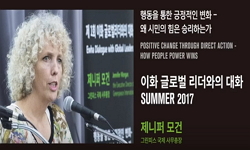Vehicle electrification and lightweighting are key approaches to curb greenhouse gas emissions from the ground transport sector. With a surging demand for electric vehicles (EVs), the International Energy Agency predicts that the production volume of ...
http://chineseinput.net/에서 pinyin(병음)방식으로 중국어를 변환할 수 있습니다.
변환된 중국어를 복사하여 사용하시면 됩니다.
- 中文 을 입력하시려면 zhongwen을 입력하시고 space를누르시면됩니다.
- 北京 을 입력하시려면 beijing을 입력하시고 space를 누르시면 됩니다.
Circular Economy of Electrified and Lightweighted Vehicles: Economic and Environmental Benefits = Circular Economy of Electrified and Lightweighted Vehicles: Economic and Environmental Benefits
한글로보기https://www.riss.kr/link?id=A108633109
- 저자
- 발행기관
- 학술지명
- 권호사항
-
발행연도
2022
-
작성언어
-
- 주제어
-
KDC
500
-
자료형태
학술저널
-
수록면
4-4(1쪽)
- 제공처
-
0
상세조회 -
0
다운로드
부가정보
다국어 초록 (Multilingual Abstract)
Vehicle electrification and lightweighting are key approaches to curb greenhouse gas emissions from the ground transport sector. With a surging demand for electric vehicles (EVs), the International Energy Agency predicts that the production volume of lithium-ion batteries (LIBs) will grow substantially during the next decade, from 160 to 1600-3200 GWh per year depending on scenarios. Since LIBs rely on critical materials such as lithium, cobalt, and nickel, concerns arise about the resource availability and carbon footprint of these materials. Circular economy strategies including remanufacturing and recycling of EV batteries are deemed essential to resolve the issues. This presentation will discuss the circular economy of EV batteries from both economic and environmental perspectives. Remanufacturing and reusing retired EV batteries, i.e., second-life batteries (SLBs) provide potentially inexpensive and low-carbon energy storage for residential and utility-level applications especially when combined with renewable energy such as wind and solar power. Through research collaboration with universities, we found that the economic benefits largely depend on electricity pricing structure, cost of purchasing and refurbishing retired batteries and the performance of SLBs, while the carbon emission benefits are determined mainly by the electricity mix charging the SLBs. There are also key challenges remaining for future market growth of SLBs such as variable properties of retired batteries. Recycling end-of-life EV batteries is another crucial strategy to reduce mining and processing of battery materials, thus their cost and embedded carbon emissions. In this talk, the potential benefits from closing the loop of battery life cycle will be discussed based on recent research on battery recycling. Finally, Ford uses a large amount of aluminum in the body of pick-up trucks and SUVs to reduce fuel consumption and life cycle carbon footprint. A dynamic material flow analysis shows that if current trends continue the aluminum body scrap from end-of-life Ford Trucks and SUVs would reach approximately 125 and 250 kt/yr by 2035 and 2050, respectively. This scrap represents a unique opportunity for cost and CO<sub>2</sub> savings. This presentation will discuss Ford research towards closed-loop recycling of the upcoming wave of aluminium sheet scrap.
동일학술지(권/호) 다른 논문
-
Game Changing Development in E-waste Recycling in the Age of Electric Vehicle
- 한국폐기물자원순환학회
- ( Kang In Rhee )
- 2022
-
- 한국폐기물자원순환학회
- ( Evangelos Gidarakos )
- 2022
-
New Recycling Processes of E-wastes using AI and IoT Technologies
- 한국폐기물자원순환학회
- ( Seung-whee Rhee )
- 2022
-
Zero Waste Initiative from Concept to Practice
- 한국폐기물자원순환학회
- ( Jinhui Li )
- 2022




 KISS
KISS



